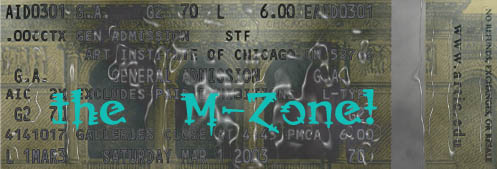
|
|
April 2007 |

|
The plan once again this year is to paint each day. That is to say I would daily begin and complete at least one painting, aside from any other ongoing projects. The format would be diminutive (which would facilitate several goals) and the medium would be oils. The compliment of brushes I've used for years will be complimented with a very limited set of synthetic brushes. 5x7 and 6x8 is *tiny* compared to the much larger canvases I have nearly always worked with. At the same time detail is not an overriding goal of these exercises, but rather putting into practice all aspects of achieving a likeness (whether of plant, mineral or animal) with minimal effort and maximal artistic expression in as short a time as possible. The smaller format also works to my advantage in terms of time constraints: most of these paintings are accomplished in under an hour. I can think of no other way to release myself from my unthinking attention to detail.
Some (many?) of these paintings will be awful - an understandable outcome given my hesitancy in painting a human likeness, not to mention the many limitations outlined above. As time goes on I should find myself set free from the bondage of fear and concern for the outcome, and realize instead a pleasing artistic portraiture. This is not, after all, photography.
Most of these P.A.D. paintings make me happy, in addition to providing me with invaluable challenges and learning experiences. In the end, whether a viewer receives gratification from any work of mine (or that of another artist) is of little importance given the vast array of tastes and human emotional states. What matters most to me is the continued growth of confidence I have already achieved in my own work, as well as improvement in human portraiture.
Update - I'd like to mention the books which most inspired me to put "miles of canvas behind me" - Robert Honre in "The Art Spirit". Craig Nelson wrote "60 minutes to better painting" and still on my list is "Harley Brown's Eternal Truths for Every Artist" - several times I've picked at it, but for some unknown reason haven't read it cover to cover. The only reason I mention these is because they, together, helped me see what (literally) hundreds of other art instruction books failed to demonstrate. Most art instruction books are introductory and cover the same basic material (unintentional pun) without helping to reach past 'what kind of oil paints / brushes / canvas fabric to use', etc.
Update ii - Apparently the fact that everything is posted has not been mentioned in this,
or previous, PAD documentation : during a P.A.D. project everything is shown - the GOOD,
the BAD, and the UGLY. Nothing is hidden from the viewer, and this kind of ''honesty in
disclosure'' is so difficult to perform that few others (if any) include it as part of their P.A.D.
Project
